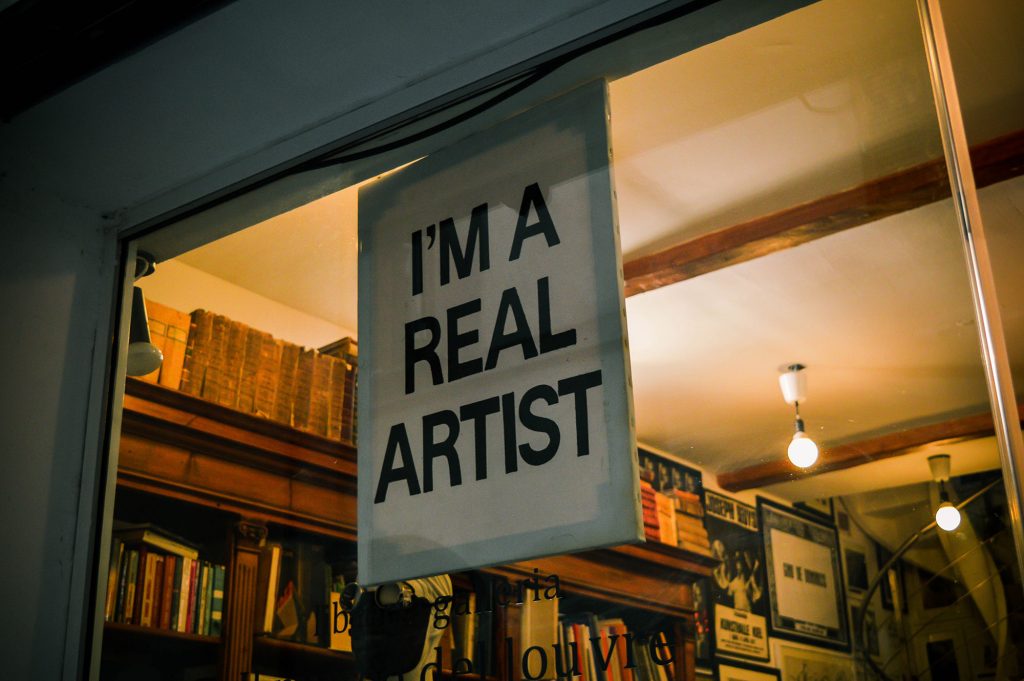
Most of us have at least heard the terms “emerging”, “mid-career” and “established” to describe where an artist is at in their career. “Emerging” isn’t necessarily synonymous with being junior or inexperienced. There are many factors at play when it comes to identifying an Artist’s status, and because of this, some Artists choose to avoid it altogether.
Unlike other industries that have more rigid hierarchies – i.e. a Junior Accountant is decidedly less experienced than a Senior Accountant – the success of an Artist can take many forms.
When distinguishing between emerging, mid-career, and established, consider the following:
- How has the Artist’s body of work evolved over time?
- Is the art… good? What kind of journey did the Artist go through to create it? Is the technical skill there?
- Has a clear signature style developed that is recognizable?
- How large is the body of work consistent with this signature style? Newer artists may only have a handful, while more established artists should have twelve or more in the bag.
- How many people know about this artist, or have expressed interest in their work? An easy way of getting a sense of this is by looking at their Instagram account and the number of views on their artworks.
- And with that, who is their audience? Are they fellow art students, new collectors, or hardcore art buyers found hopping around Art Basel?
- How much work have they sold, and for what value?
Right off the bat – most Artists fall in the “emerging artist” category, and may remain as such for their entire career. And that is perfectly fine.
To be considered a “mid-career Artist” in the traditional sense, one would expect them to have had numerous solo art shows, recognition in publications, and collectors both nationally and internationally.
While there is more of a gray area between Emerging and Mid-Career Artists, Established Artists, aka “Blue Chip” Artists, are in a league of their own that is somewhat removed from that of Emerging and Mid-Career Artists. We’ll talk about that more in a future post.
Even with the quantitative markers, it’s still ambiguous. An art student may have 5K followers on Instagram, but only a handful of sales. A more mature Artist may only have 150 followers on Instagram, but have sold many more works over their lifetime. More people know about the art student, while the other Artist has sold more work. Who is the better artist?
When it comes the value of artwork, this can also be confusing. Generally, artwork priced up to $3,000-$5,000 CAD is within the price range of work by Emerging Artists. However, this varies with scale, and Artists that consider themselves Mid-Career Artists can also fall within this range.
And then, onto the age-old question of how can one tell if an art piece is of quality? A painting by Artist XYZ that I believe is “good” may be considered “bad” to another. It’s a question that rarely has a decisive answer, and we recommend viewing the video below from Professor Paul Gough, Pro Vice-Chancellor Design and Social Context and Vice-President at RMIT as he tackles this quite concisely.
In the end, whether an Artist is a new emerging Artist, becoming a mid-career Artist, or some mashup of the two, one has to wonder: does it matter? A fixation on labels can only achieve so much, and there are many other interesting questions that we can ask in the name of collecting art and following the careers of Artists.
Practice makes perfect.
Develop your own opinion and taste for art. Discover pieces by talented emerging Artists on Partial, see the level of interest based on their artwork views, and ask them any question you like.